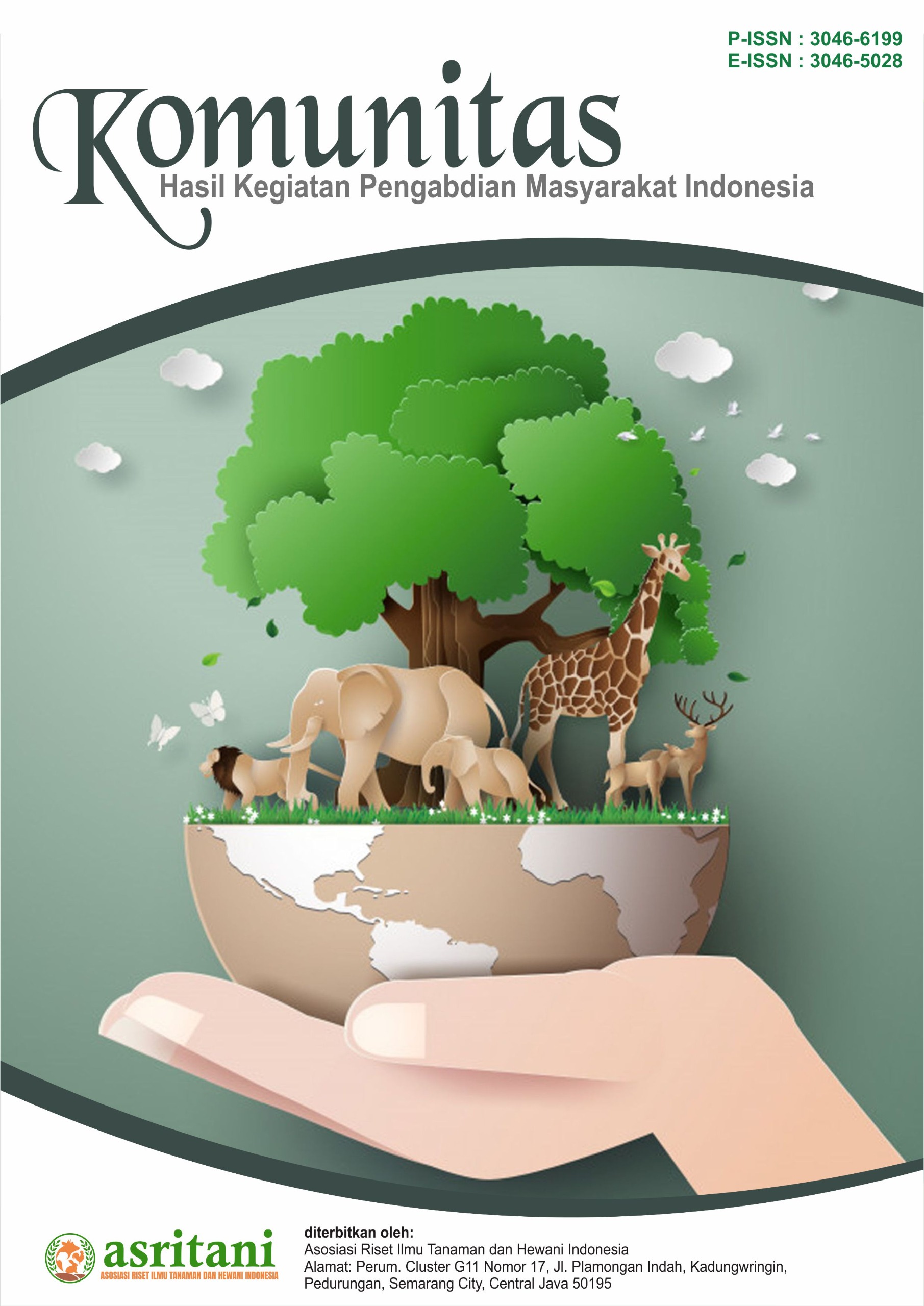Sosialisasi dan Pelatihan Keuangan Wirausaha bagi Para Penenun Ulos di Desa Sigaol Timur, Kecamatan Uluan, Kabupaten Toba, Sumatera Utara
DOI:
https://doi.org/10.62951/komunitas.v3i1.113Keywords:
entrepreneurship, ulos weaving, financial management, trainingAbstract
The purpose of this community service is to provide a better understanding of Ulos weaving business actors in Sigaol in order to make regular business financial administration and to provide knowledge to Ulos weaving business actors in order to make business financial planning effectively. The method used is to introduce and socialize community service programs to ulos weavers to convey the background and objectives of the activity, introduction and training in making business plans, making profit and loss statements, balance sheets and financial reports and conducting evaluations to determine the success of the training that has been given to Ulos weavers. The ulos weavers in Sigaol Timur Village are still in the stage of starting their business and are currently included in the MSME group. Currently there are around 20 weavers who are members of the Bintang Maratur Ulos Weaving Group. This community service activity was carried out well and is expected to provide an outcome where the ulos business owners in Porsea and their employees get motivation and are expected to increase their competence, especially in terms of financial management so that they can have a higher competitive advantage.
References
Alfaruq, S. S. (2019). Manajemen keuangan dan kewirausahaan sukses. Sleman: Deepublish.
Anggraeni, B. D. (2015). Pengaruh tingkat literasi keuangan pemilik usaha terhadap pengelolaan keuangan: Studi kasus UMKM Depok. Jurnal Vokasi Indonesia, 3(1), Article 2. https://doi.org/10.7454/jvi.v3i1.1066
Astuty, H. S. (2019). Praktik pengelolaan keuangan wirausaha pemula. Sleman: Deepublish.
Bodie, Z., Kane, A., & Marcus, A. J. (2021). Investments (12th ed.). McGraw-Hill Education.
Brigham, E. F., & Ehrhardt, M. C. (2020). Financial management: Theory & practice (16th ed.). Cengage Learning.
Chen, H., & Volpe, R. P. (2019). The impact of financial literacy on household financial behavior. Journal of Financial Counseling and Planning, 30(1), 1-14.
Gitman, L. J., & Zutter, C. J. (2019). Principles of managerial finance (15th ed.). Pearson.
Huston, S. J. (2010). Measuring financial literacy. Journal of Consumer Affairs, 44(2), 296-316. https://doi.org/10.1111/j.1745-6606.2010.01170.x
KBBI. (2025). Kamus Besar Bahasa Indonesia (KBBI). Retrieved from http://kbbi.web.id/pusat
Lusardi, A., & Mitchell, O. S. (2014). The economic importance of financial literacy: Theory and evidence. Journal of Economic Literature, 52(1), 5-44.
Mankiw, N. G. (2020). Principles of economics (9th ed.). Cengage Learning.
Mishkin, F. S. (2021). The economics of money, banking, and financial markets (13th ed.). Pearson.
Modigliani, F., & Miller, M. H. (1958). The cost of capital, corporation finance, and the theory of investment. The American Economic Review, 48(3), 261-297.
Ross, S. A., Westerfield, R. W., & Jordan, B. D. (2022). Fundamentals of corporate finance (13th ed.). McGraw-Hill Education.
Suharto, E. (2019). Literasi keuangan dan perilaku pengelolaan keuangan pada UMKM di Indonesia. Jurnal Keuangan dan Perbankan, 23(2), 123-135.
Tambunan, T. T. H. (2019). UMKM di Indonesia: Kebijakan dan perkembangan. Jakarta: LP3ES.
World Bank. (2017). The Global Findex Database 2017: Measuring financial inclusion and the fintech revolution. Washington, DC: World Bank.
Downloads
Published
How to Cite
Issue
Section
License
Copyright (c) 2025 Komunitas: Hasil Kegiatan Pengabdian Masyarakat Indonesia

This work is licensed under a Creative Commons Attribution-ShareAlike 4.0 International License.





